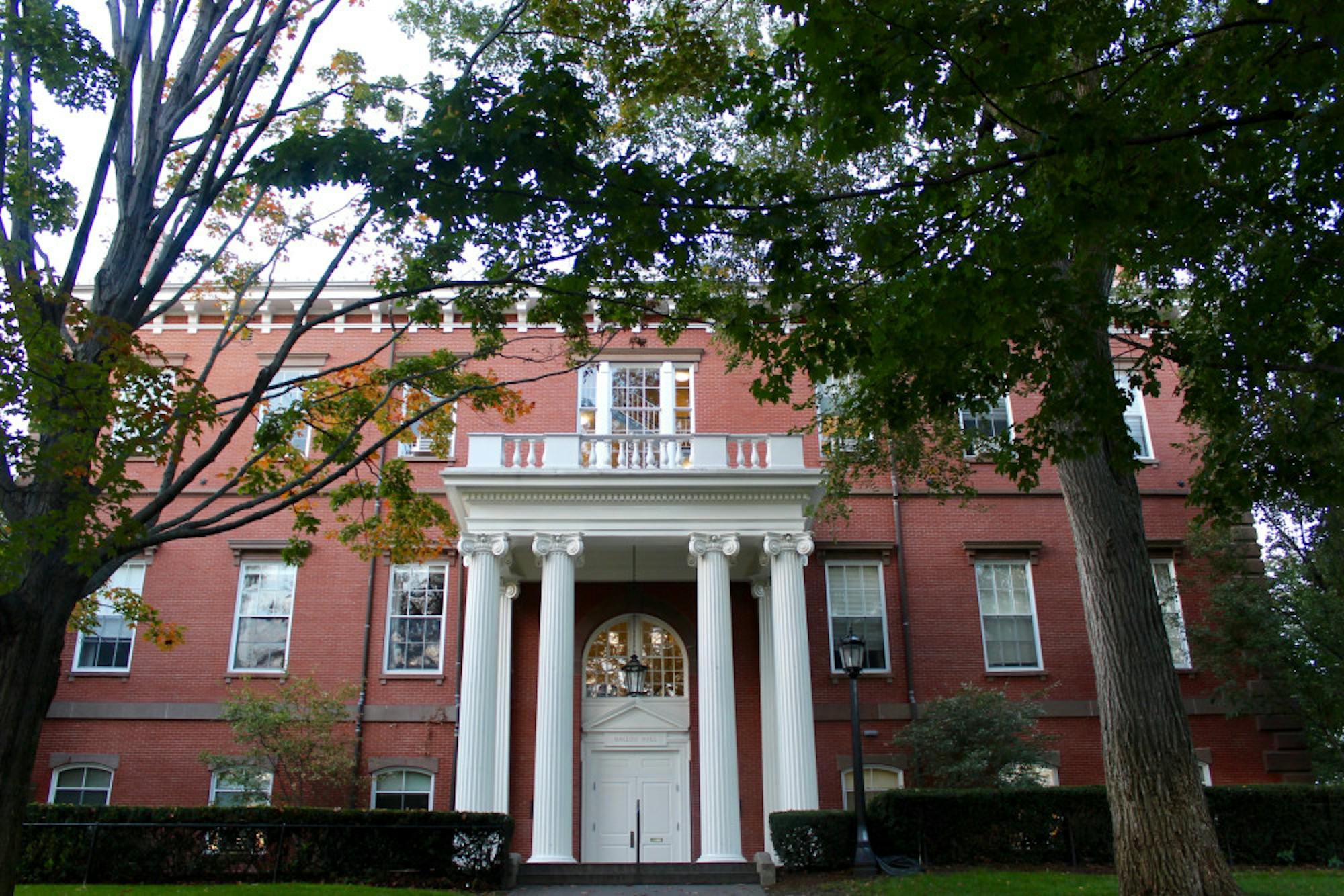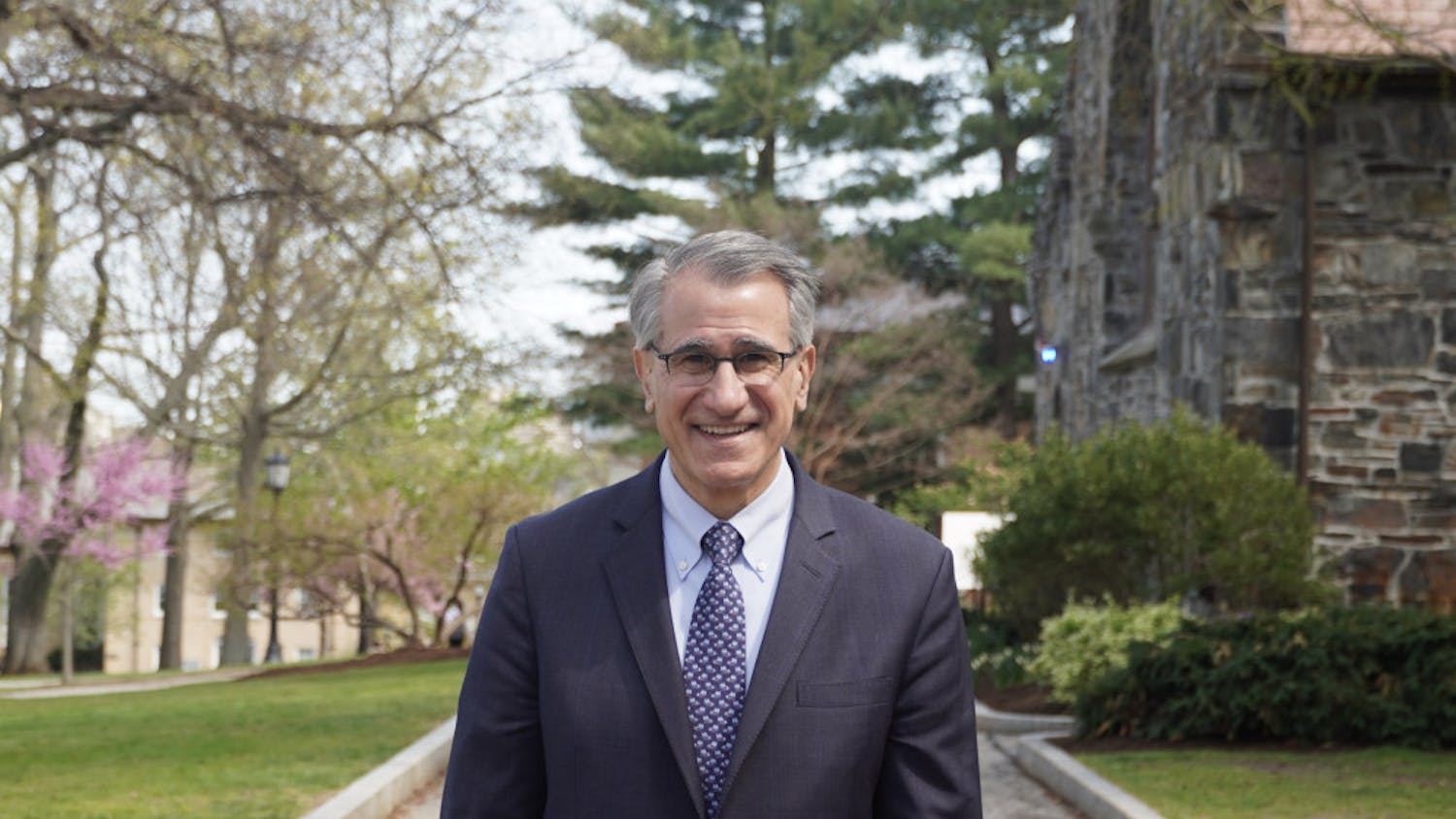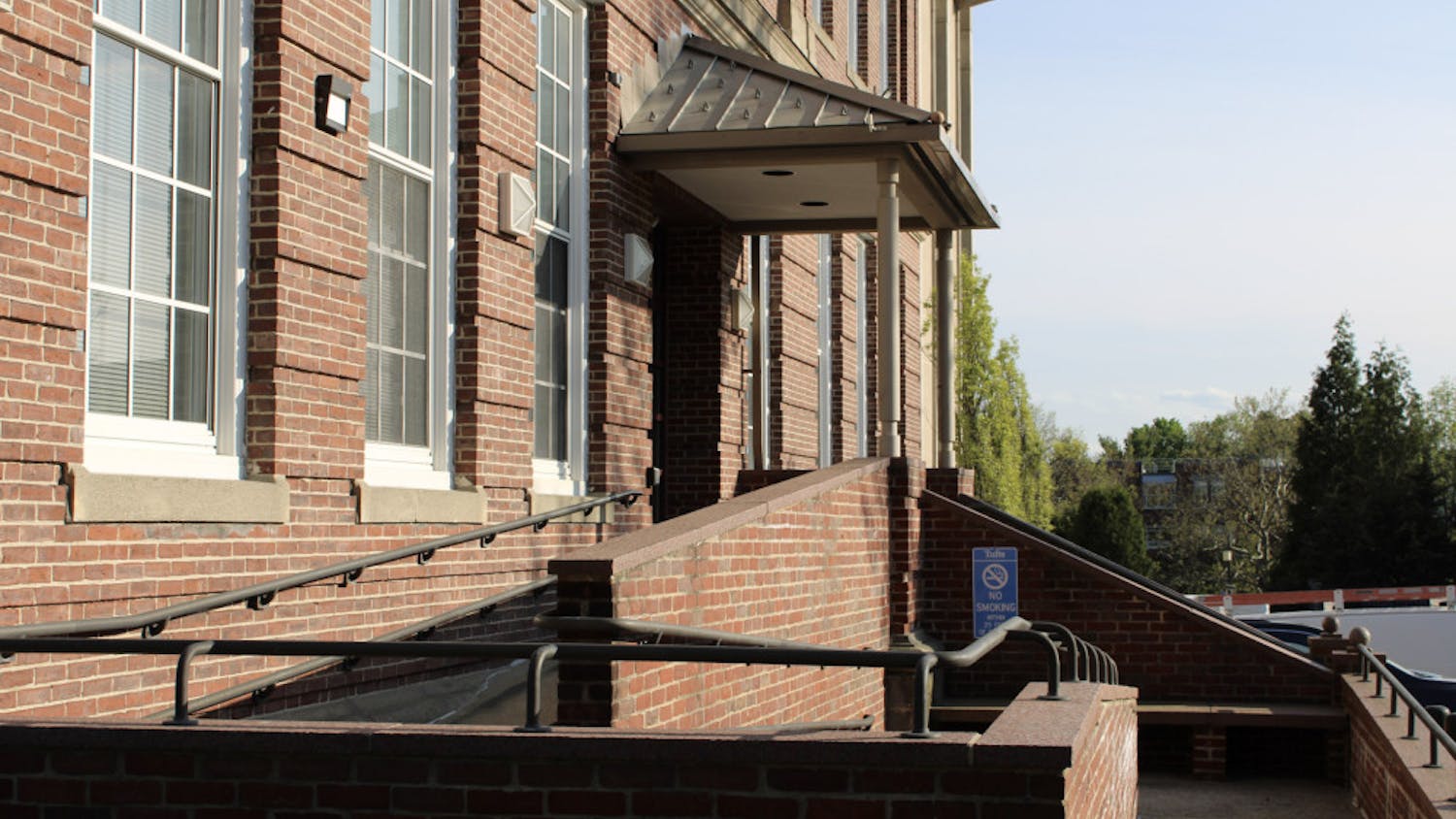This is part two in a four-part series from the Daily’s Investigative Team.
In a March 29 email from the Office of the Deans to the Tufts community, tuition and fees were announced for the 2018–2019 school year, amounting to a record high of $70,491.This high sticker price, which is among the highest in the country, has sparked student concern that as tuition rises, the university is not prioritizing making the school accessible to low-income students.
According to Assistant Professor of Sociology Freeden Blume Oeur, who taught a class last semester titled “The Sociology of Higher Education,” there are two main reasons why Tufts is less affordable than its peer institutions. The first is the Great Recession of the late 2000s and early 2010s, which hit many schools hard across the country.
Sol Gittleman, former Tufts provost and chair of the then-combined Russian and German Department, explained how the recession caused a decrease in Tufts' endowment under former Tufts President Larry Bacow’s administration.
“During Bacow and the economic decline, [Tufts’ endowment] went from $1.6 [billion] to $1.2 [billion]. We lost $400 million like that,” Gittleman told the Daily.
According to Nick Ducoff, the co-founder and CEO of Edmit — a company that helps students evaluate college as an investment — the adoption of the Yale Model is likely responsible for these significant endowment losses. The Yale Model is an endowment investment strategy popularized by David Swensen, Yale’s chief investment officer. According to the International Banker, the strategy involves taking the university’s endowment and investing it in non-traditional assets like foreign equity and private-equity funds.
Ducoff said that because universities are now treated like businesses that invest large portions of their endowments, their financial success is tied to the stock market — meaning the Great Recession had a substantial impact on what universities could pay for.
“Companies like Cambridge Associates work with smaller university endowments like Tufts ... to invest their endowments but larger universities like Harvard and the University of Texas have their own in-house investment management companies," Ducoff wrote in an email to the Daily. "There's a running joke about whether Harvard is a hedge fund with a university or a university with a hedge fund."
Ducoff explained that because schools like Tufts have smaller endowments, there aren't as many investment opportunities available. Therefore, the individual investments made by schools like Tufts, which has a $1.7 billion endowment, may have a larger impact on their endowment than the investments made by schools like Harvard, which has a $37 billion endowment.
Financial management has fluctuated over years, contributing to deficit
Blume Oeur’s second reason is general mismanagement of finances, especially during this economic decline.
“There have been cases of the mismanagement of finances ... and sometimes you don’t get as high of a return on your investment as you had hoped and you end up spending more than you anticipated,” he said.
When asked about the history of Tufts' financial mismanagement, Chairman of the Board of Trustees Peter Dolan pointed to the school's highMoody’s rating as an example of successful financial management.
“The university has had a long history of strong financial management, as evidenced by our strong Moody’s rating, which is affirmed annually,” Dolan told the Daily in an email.
According to Moody’s website, “the purpose of Moody’s ratings is to provide investors with a simple system of gradation by which future relative creditworthiness of securities may be gauged.”
University Executive Vice President Patricia Campbell and Vice President for Finance and Treasurer Tom McGurty agreed with Dolan’s assessment of Tufts' financial management.
“Over the years, the university has occasionally faced financial challenges, just as many large organizations do. We always have overcome them through prudent financial management. In the same way, we are committed to addressing the budget issues we face this year,” they wrote in a joint email to the Daily.
While Tufts may have high a Moody's rating overall, there have been cases of significant financial mismanagement, most notably during Bacow’s tenure, where Tufts lost $20 million in hedge fund investor Bernie Madoff’s infamous Ponzi scheme.
It’s unclear what the link is between these specific cases of financial mismanagement and Tufts' increased tuition. However, despite Campbell and McGurty’s projections for the university, according to Dean of the School of Arts and Sciences James Glaser, the deficit for Tufts' School of Arts and Sciences will likely be maintained through the next year.
“We do project to have a very modest deficit this year. At the moment, we project to have a deficit in the school next fiscal year as well. We are doing what we can to anticipate it,” Glaser wrote in an email to the Daily.
Is the deficit tied to expansion?
According to a Daily article published December 2017, the Schools of Arts and Sciences and Engineering were required to pay off $10 million toward a total of $161 million in outstanding debt.
Scott Sahagian, business advisor to the Office of the Vice Provost for Research, addressed the deficit in a School of Arts and Sciences faculty meeting last September. According to the meeting minutes, he said that the deficit is tied to the university’s goals of expansion: There has been a stronger focus on improving the quality of research at Tufts, and so, despite efforts to close the deficit, it still remains.
“There was a $2.5M deficit despite the [Gap Closing Measures]. It is tied to where we are going as an institution,” he said. “We are hiring more research assistants to boost research support; student services and support need more for mental health, nutrition, dining, and accommodations ... We are trying not to cut back on the library or admissions to close the deficit.”
In an op-ed published in December 2017, juniors Parker Breza, Elizabeth Dossett and Yanelle Cruz express their frustration that Tufts continues to prioritize expansion — and through it, bolstering its elite reputation and market value — over basic affordability goals.
“The $10 million in outstanding debt Tufts is now in is a reflection of mismanagement of money and poor revenue predictions on the part of the administration, according to Dean Glaser’s comments last Tuesday. Next year when our tuition goes up, we’re going to be footing the bill for their mistakes,” Breza, Dossett and Cruz, who are all members of Tufts Student Action (TSA), wrote.
According to Glaser, this is not an accurate summary of his comments, as he made no reference to mismanagement of money or poor revenue predictions.
“What I did say was that when the CLIC and the SEC buildings were planned several years ago, there were certain assumptions — reasonable assumptions — about things like tuition increases and fundraising. The tuition increases have not been as large as anticipated, in part because of the administration's sensitivity to the cost of attendance,” Glaser wrote in an email to the Daily.
The construction of the Science and Engineering Complex (SEC), a state-of-the-art building dedicated to improved laboratory and research space, has had a significant impact on Tufts’ financial status. According to Campbell and McGurty, the construction of the SEC is one of the investments responsible for the deficit. Campbell and McGurty explained to the Daily that when the university is in debt, funding that may otherwise go to financial aid or other operating expenses goes to financing the debt service.
“There may be more investment to meet a particular need, such as the new Science and Engineering Building. While a capital investment is made at a point in time and paid for over many years, the debt financing used to support building can’t be used to support financial aid or other operating expenses,” Campbell and McGurty wrote. “Again, as an example, the need for a new science building was identified many years ago and delayed until recently.”
While Glaser did not say anything about mismanagement of money, he did say that fundraising did not bring in as much money as predicted for the construction of the SEC and the Collaborative Learning and Innovation Complex (CLIC) building. This means that they had to go further into debt than anticipated to pay for the projects.
“Tufts' fundraising in general has been robust in the past several years, but we have not brought in as much for the buildings as anticipated. This has meant more reliance on debt to pay for them. The point is that circumstances change and we have had to adjust to these circumstances,” Glaser wrote.
Evidence of this increased reliance on debt to construct the SEC can be seen in changes to Tufts’ debt service ratio. In recent years, increased expansion has caused more money to be diverted toward the SEC and other projects like it. According to the 2016 Annual Financial Report, the debt service measures “the ratio of debt service to operating expenses.” In other words, it measures how much of Tufts' revenue, made up in part by student tuition dollars, is put toward paying its outstanding debts.
According to the report, the university strives to keep the debt servicing ratio below five percent, which they have accomplished successfully. However, the debt servicing ratio increased from 3.8 percent in 2012 to 4.9 percent in 2013. Since then, it has leveled off to 4.4 percent in 2016.
According to Campbell and McGurty, the reason why the debt service ratio increased is because there was a new debt issued to pay for a new project.
“The debt service to total operating expenses ratio did increase as we issued new debt in the later part of Financial Year 2012. Consequently, the interest expense increased in the next fiscal year,” they wrote. “The additional interest expense would be one factor in the budget along with planned growth in all other expenses and all sources of revenue throughout the University.”
Ambitious projects mean sacrifices for some
While the SEC and other expansion projects ended up creating more debt than anticipated, McGurty believes that this debt is not due to poor financial planning but a result of debt absorption strategies that did not pan out.
“There were a variety of strategies that were identified that would allow us to absorb those costs in the budget … We were unable to realize them,” McGurty said. “Basically, we were looking at growth in graduate enrollment — that did not occur.”
According to Nathan Foster, a senior and trustee representative for the Tufts Community Union Senate, one of these debt absorption strategies that didn’t work out was to increase enrollment for graduate students while reducing the graduate student financial aid budget.
“They haven’t admitted as many Arts and Science and graduate students as they wanted and they’ve been forced to offer more financial aid than they wanted to offer. So going forward, they want to change both of those things," Foster said. "I’m a little bit concerned about the idea of reducing financial aid for graduate students; it kind of sounds like making graduate schools a profit center, rather than an integral part of the university where economic diversity is valued."
According to Patrick Collins, Tufts' executive director of public relations, the amount of graduate aid available did not change between last year and this year for the Graduate School of Arts and Sciences. Graduate aid, however, is calculated differently at each school: Some schools, like the School of Engineering, don’t offer financial aid for master's candidates, and thus low-income students who wish to attend must rely on outside scholarship sources.
“The School of Engineering ... does not provide financial aid to master’s degree students and has not done so for a number of years. However, the School of Engineering has established new funding avenues to support graduate students, especially low-income students and those from underrepresented group[s]. For example, the School of Engineering FAST—TRAC program, funded by a $1 million grant from the National Science Foundation, provides 20 scholarships a year to the above mentioned groups,” Collins told the Daily in an email.
Glaser explained the complicated process involved in determining the School of Arts and Sciences’ financial priorities. He said that while expanding financial aid is always the main priority, a significant amount of money goes into maintaining the university's resources, as Tufts must compete with other schools for the best professors.
“There are many big and expensive projects underway that we are absorbing into our budget. We have to support increases in compensation as well as increases in benefits. These things don't stand still and we have to compete with other institutions for faculty and staff,” he wrote in an email to the Daily. “We have to continue to invest in student life, accessibility, health and counseling, support for international students, career services, technology, residential programming, and on and on.”
TSA member Ava Ciosek pointed out that building the SEC was prioritized over expanding housing, a major problem and source of stress for low-income students who are not guaranteed on-campus housing as upperclassmen.
“I think ... Tufts has increased enrollment every year for the past five years without increasing housing in any way, yet we have a new Science and Engineering Complex; we have a new … energy power plant,” Ciosek, a first year, said, referring to the Central Energy Plant. “I think that it’s so irresponsible of the university to not put housing as a number one priority.”
Fellow TSA member Amira Al-Subaey expressed concern that the university is undertaking more expensive projects without providing an explanation for how the deficit came to be in the first place. She finds administrators’ rhetoric contradictory: The university is asking for more money to help cover the deficit and pay for projects that are underway, yet they haven’t provided any guarantees that they won’t get into a deficit again.
“This rhetoric is actually so contradictory, because we are getting this rhetoric that we’re very experienced, we’re the experts in this field, yet we’re in a deficit, yet at the same time, we’re starting this huge capital campaign for you to give us more money for us to manage,” Al-Subaey, a junior, said. “So we’re actually asking you to give us more money to cover our deficit that we got ourselves into, that we haven’t explained how we’re not going to get into the same deficit again with the money you are currently donating to us.”
Affordability and the Budget, Part 2: The role of the deficit in rising cost of attendance

Ballou Hall is pictured on Oct. 7, 2016.





